The days are long gone when a crack in your refrigerator liner meant that you needed to replace the fridge. And broken shelves were deemed unmendable. Nowadays, you can address this problem yourself without calling the manufacturers. Even though repairing refrigerator plastic is easy, many people do not know which adhesive they should use. If you wonder what the best glue for refrigerator plastic is, let's look at our options.
The following are the few types of sealant that are suitable for refrigerator repair:
- Cyanoacrylate Super Glue - This low viscosity and transparent PVC glue are best for repairing PVC parts of a fridge.
- Sugru Moldable Glue - This moldable glue is easy to work with and dries to white, hard silicone rubber. The cure takes 24 hours, and it is waterproof.
- Silco RTV 4500 Food-Safe Silicone Sealant - This USDA and FDA-approved food-safe super glue is loved by many for its cold resistance.
- Gorilla Super Glue Gel - Among all of the other types of Gorilla Glue, the Super Glue Gel is considered the best for refrigerator plastic due to its impact and cold resistance.
Now that you know the best adhesives to use for refrigerator plastic, you might also want to find out why the fridge was cracking in the first place. Additionally, how do we go about repairing the area that needs fixing? It's crucial to know these details. That way, you won't have to redo the project over again. If you'd like to find out more, keep reading ahead.
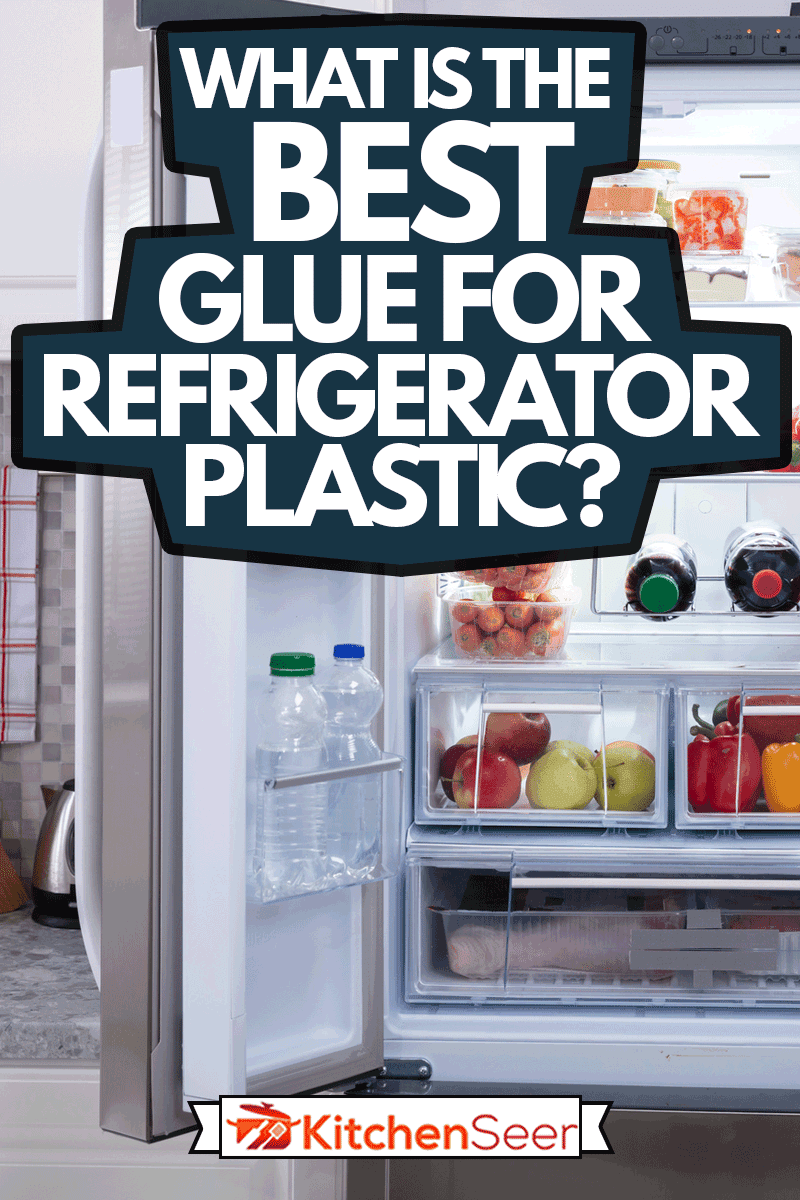
Why Is My Fridge Cracking Inside?
There are many reasons why the inside of your fridge might be cracking. But the most common cause is pressure. More often than not, people put more stuff on the fridge shelves than it can handle. And this increase in pressure can crack the inside of the fridge.
Another reason why your fridge is cracking inside can be due to a sudden temperature change. If you change the setting of your fridge to the highest from the lowest, it can affect the state of the plastic and crack it.
Depending on how new your refrigerator is, it could be due to manufacturer errors. Liners are not made to be fit right away. Instead, in the assembly line, they're stretched to fit inside. Some brands may use thinner liners that are more susceptible to cracking.
The last reason could be because of impact. Maybe you're returning from a busy day. And, you or the kids throw the food items inside without much consideration. One hard knock can be enough to form a crack on the liners.
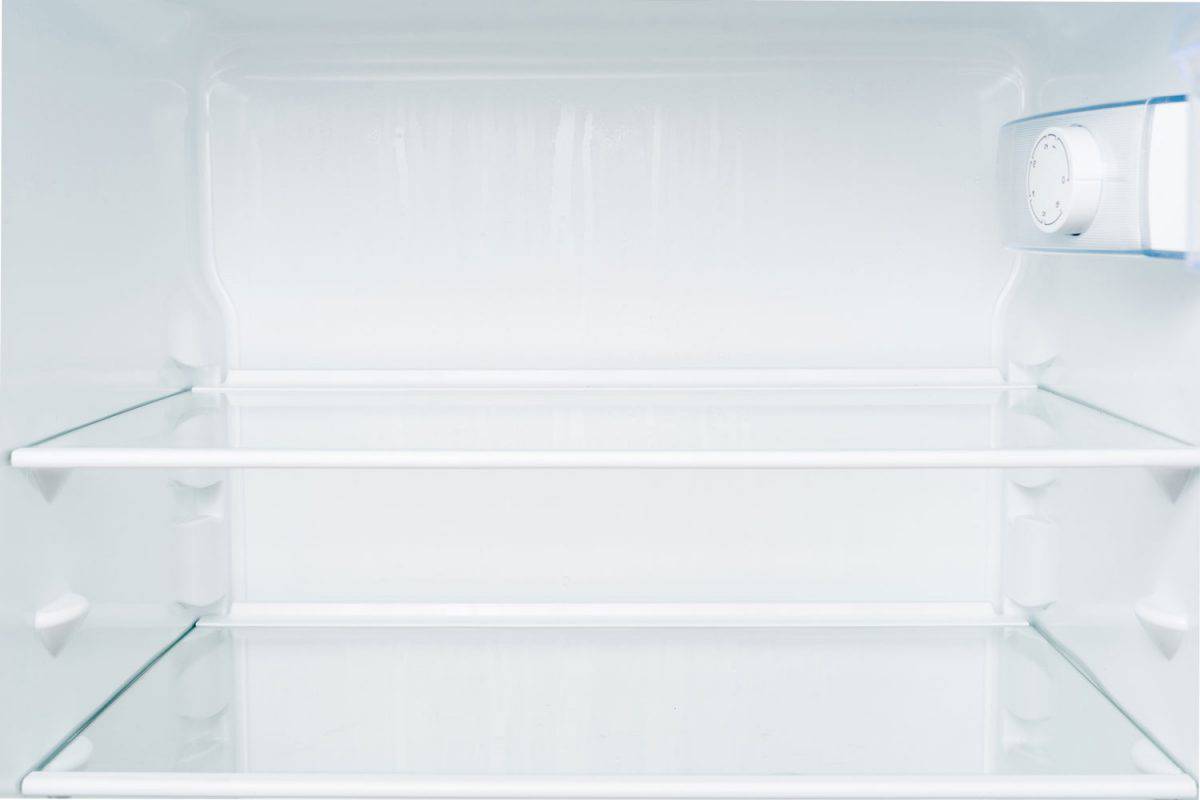
How Do You Fix Plastic Inside a Fridge?
Now that we have an idea of what adhesives we can use, it's time to put that knowledge into practice.
These are the items you will need to fix plastic inside a fridge:
- Sanding block, 100-grit
- Refrigerator liner repair kit
- Latex gloves
- Rag
- Scissors
Once you get all of the items on the list, you will need to follow these steps to fix plastic inside a fridge:
- Turn off the temperature control of the fridge. Remove all of the items from the refrigerator to prevent the food from getting in contact with the adhesive.
- Now, prepare the surface of the shelf that has a crack.
- Get a 100-grit sandpaper block, and with light pressure, sand the area with signs of damage.
- Beware, high pressure can increase the size of the gap and worsen the situation.
- Put on some latex gloves to protect your skin from the glue.
- Apply the glue on the crack from end to finish and let it sit. Once the glue is dry to touch, it is time for the next step.
- Get the fiberglass cloth and cut it ¼ inches longer than the length of the crack. The width of this strip would be ¾ inch.
- Apply the same glue on the strip and press it onto the crack. Smooth out any wrinkles and wait for them to dry.
- Once the glue is dry, sand lightly with the 100-grit sand block, then clean out the sanding dust with the help of a damp rag.
- Apply a thin layer of glue for the last time.
- Once cured, install the shelves and items that you removed. Do not forget to turn on the temperature button.
What Kind of Plastic Is Inside Refrigerators?
Polystyrene (PS), Polyurethane (PU), Polypropylene (PP), polyethylene (PE), styrene-butadiene-acrylonitrile copolymer (ABS) are the main types of plastics used for manufacturing the inside of refrigerators. These five main types of plastics manufacture almost 90% of the plastic parts in refrigerators.
The following are also common inside a fridge:
- Polycarbonate (PC)
- Polyvinyl chloride (PVC)
- Polymethyl methacrylate (PMMA)
- Polyoxymethylene (POM)
- Polyamide (PA)
However, these plastics are only present in the lampshades, door seals, display panels, hinges, and shaft sleeves of the refrigerator.
Can I Use Gorilla Glue in the Fridge?
Gorilla glue is extremely cold-resistant and can withstand temperatures from -40 to 200 degrees Fahrenheit without cracking. This high-temperature resistance makes people believe that gorilla glue is suitable for use in the fridge. However, it's still not advisable to use just any type of glue.
The main reason behind this is that the manufacturer of Gorilla glue advises against this. As we can see from the FAQ, they state that the adhesive is not intended for use with direct or indirect contact with food. Additionally, they recommend not using it near food or inside the refrigerator.
We wouldn't recommend using Gorilla glue to fix the liners inside the fridge. Still, sometimes it's tough to find a product that can form a good bond with plastics. At best, you can use it to fix the handles or any plastic components outside. For the interior, you're better off looking for another adhesive.
Click here to see this Gorilla glue on Amazon.
How To Repair a Crack on a Refrigerator Shelf?
Sometimes due to the excess pressure of food items, the fridge shelves start getting cracks. These cracks are not difficult to repair if you have the right products at hand. If you are wondering how to fix your refrigerator shelves, get these items first:
- Bar clamp
- Clear, strong adhesive
- Silicone sealant
- Two-part epoxy
- Superglue
- Acetone and rag
- Toothpicks
Now that you have all of the items at hand - let’s start repairing the shelves.
- Remove the shelf from the refrigerator and clean it thoroughly. If you have previously used tape to hold the cracks together, remove that tape and remove the residue. Acetone-soaked rugs will come in handy in removing the tape residue.
- Hold the shelves near the crack and slowly pull apart the damage. If you cannot tear apart the gap because of how tiny it is, gently push one half of the gap upward, so there is a small distance between the edges of the crack. Use a thin object, such as a toothpick to keep the edges of the gap apart.
- With the help of another toothpick, apply the strong adhesive on both sides of the crack.
- Remove the toothpick holding the crack apart and make sure the two halves of the gap are linked together. Use a clamp to have the shots together, so they do not move.
- Clean the top and bottom of the crack with an acetone soaked rag to remove excess glue. The acetone will prevent the shelf from having hardened glue spots.
- Now, wait for it as instructed on the back of the glue. For most adhesives, the waiting period is 24-48 hours.
- After the crack has finally settled, install the shelf in the refrigerator.
How To Mend a Broken Refrigerator Shelf?
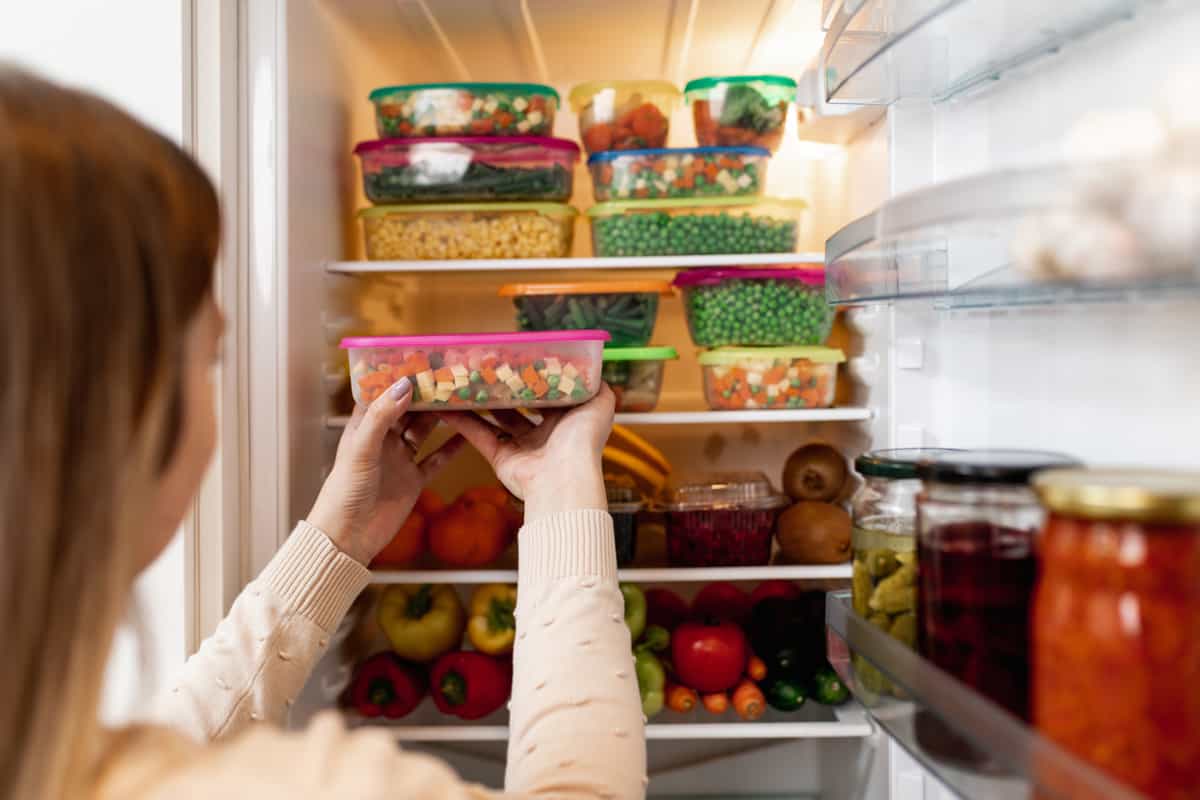
Repairing cracks in a refrigerator shelf seems more effortless than a broken into halves rack. However, with a bit of research, you can repair even two broken halves of a frame.
For starters, you will need the following items to do the repairing job:
- A big clamp
- Clear and strong adhesive
- Acetone
- Rag
- Toothpicks
- 2 to 4 1-inch steel bands
Now follow these steps:
- Start the process by cleaning the shelves from any type of food spills and glue residue.
- Now wipe the two halves of the rack with an acetone soaked rag. The acetone will clean the frame even further and help the glue stick better.
- Apply a thick layer of adhesive on the edges of the crack with the help of a toothpick.
- Perfectly align the halves of the shelf and hold them together with a large clamp.
- Flip the shelf over so that you are working on the underside of the frame now. And with the help of adhesive, stick 2 to 4 metal bands across the shelf for additional support.
- Clean the excess glue with an acetone soaked rag.
- Wait for 24-48 hours for the shelf to set. After that, you can return the rack to the refrigerator and continue using it as regularly.
Final Takeaway
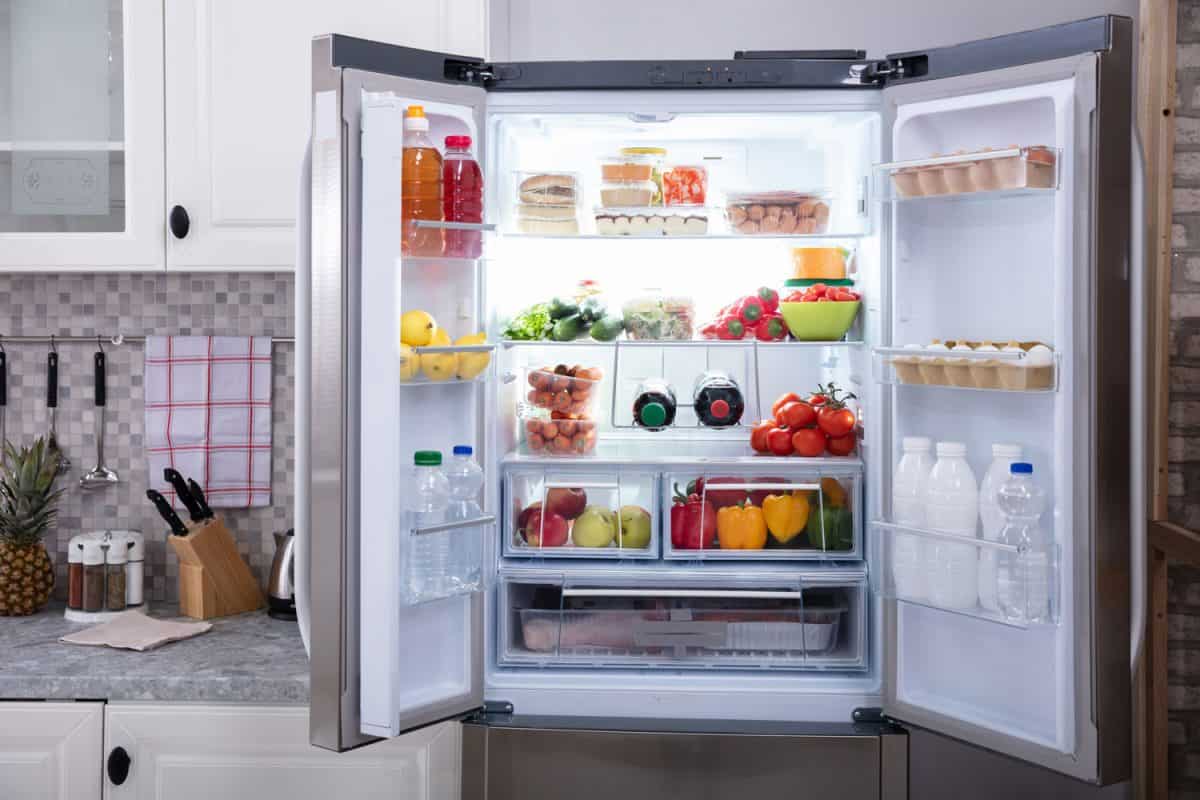
While fixing components always beats purchasing a replacement, you'll have to know what to do first. And, more importantly, knowing what adhesives are safe to use. This way, you won't have to deal with another problem. We hope you found the information above helpful!
Before you go, are you restoring other areas in the kitchen? What about kitchen cabinets? If you'd like guidance in the DIY project, check out our post - How To Restore Kitchen Cabinets And Fix Worn Spots.
Are you looking to renovate the kitchen counters? You might be wondering if they're glued down. If so, check out our post - Are Kitchen Counters Glued Down? [And How To Remove Them]
Until next time - good luck with the fixes!


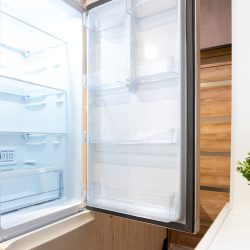
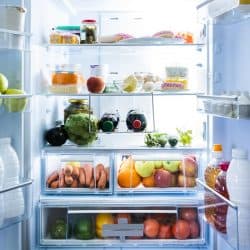
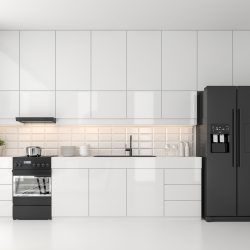
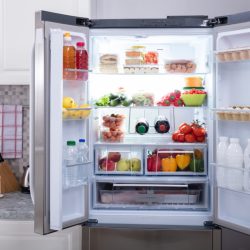
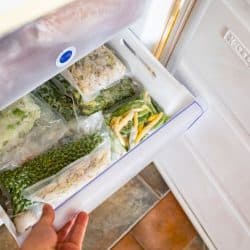
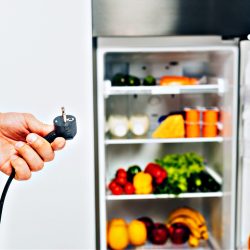
Do you know what plastic the bottom part of my fridge door is which holds the hinge? I can’t afford a 900$ door and as it’s a clean break I’m hoping to fix it
I would recommend using a hot glue gun to attach the plastic to the wood.